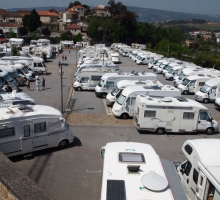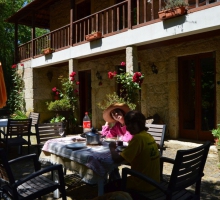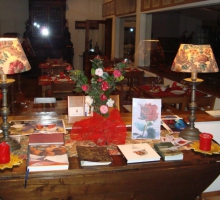The “Crastoeiro” is implanted at an elevation of 453 meters on a small hill that stands on the slope of “Monte Farinha” southwest, overlooking the valley of the Campos riverside, a tributary of the river Tamega.
The most ancient occupation of this place may date to the III millennium BC, being materialized by a remarkable set of granite outcrops with abstract engravings, made by the technique of stamping and abrasion. A small sample of ceramic type “Penha”, attributable to regional copper age and several fragments, technologically inserted in the Bronze Age, found in excavations carried out in Crastoeiro, may be indicators of frequency of this site - eventually considered a "sanctuary" - during these periods indented. In the Iron Age, from the century IV BC, the Crastoeiro was occupied permanently.
Huts in perishable materials, the clay remaining residues which consolidated the walls and floors much compacted gravel, gravel and the open trenches, maybe used for storage of cereals are certain registers of this stage. Later, rose up a stone wall and houses have evolved into stony solutions, more durable, whilst the primitive building model still remains.
The most ancient occupation of this place may date to the III millennium BC, being materialized by a remarkable set of granite outcrops with abstract engravings, made by the technique of stamping and abrasion. A small sample of ceramic type “Penha”, attributable to regional copper age and several fragments, technologically inserted in the Bronze Age, found in excavations carried out in Crastoeiro, may be indicators of frequency of this site - eventually considered a "sanctuary" - during these periods indented. In the Iron Age, from the century IV BC, the Crastoeiro was occupied permanently.
Huts in perishable materials, the clay remaining residues which consolidated the walls and floors much compacted gravel, gravel and the open trenches, maybe used for storage of cereals are certain registers of this stage. Later, rose up a stone wall and houses have evolved into stony solutions, more durable, whilst the primitive building model still remains.
Location: Mondim de Basto








